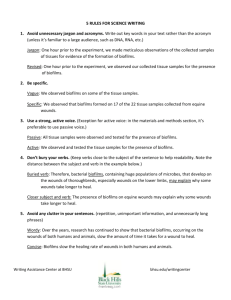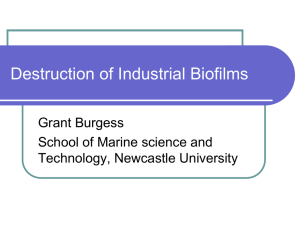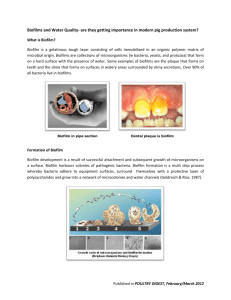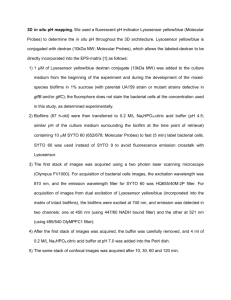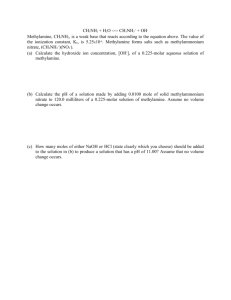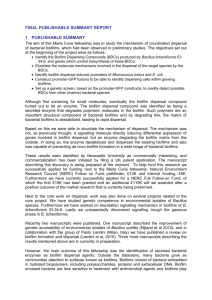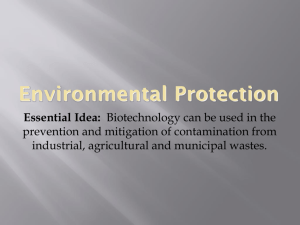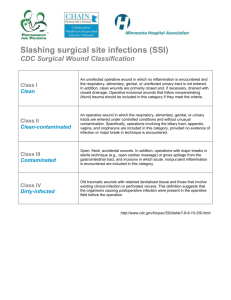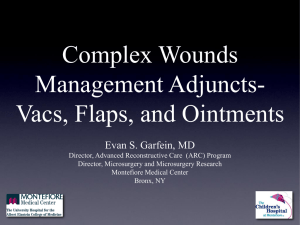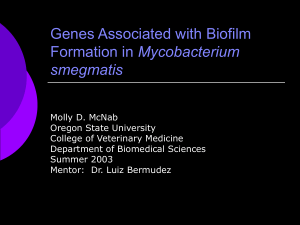IN-VITRO EVIDENCE OF THE ANTI
advertisement
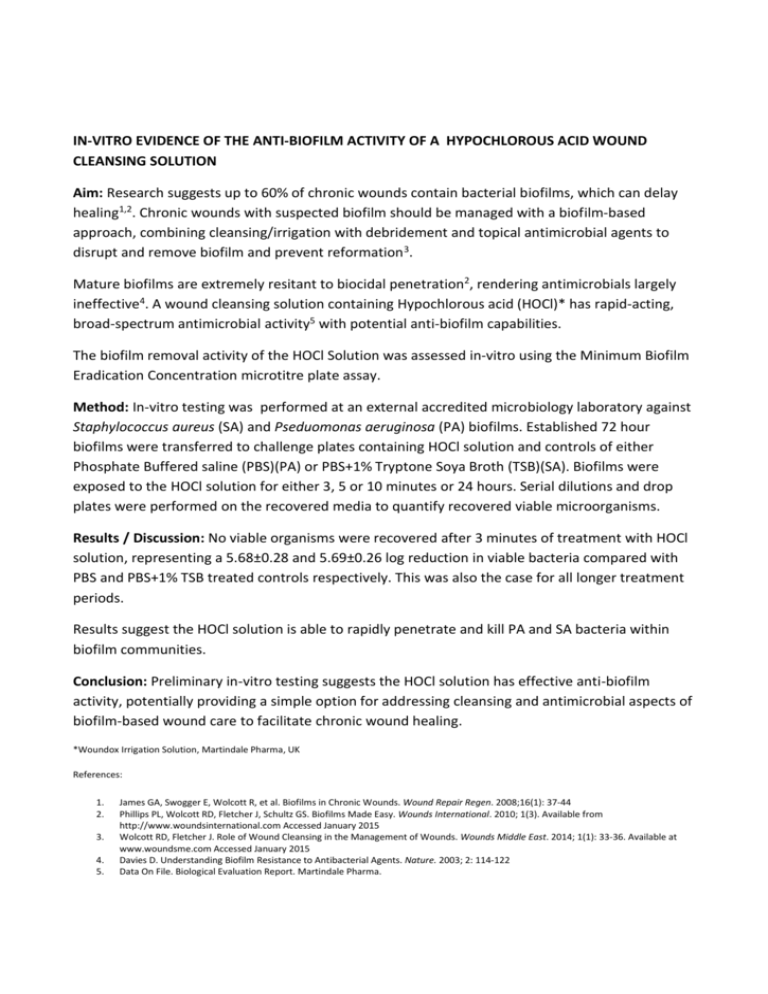
IN-VITRO EVIDENCE OF THE ANTI-BIOFILM ACTIVITY OF A HYPOCHLOROUS ACID WOUND CLEANSING SOLUTION Aim: Research suggests up to 60% of chronic wounds contain bacterial biofilms, which can delay healing1,2. Chronic wounds with suspected biofilm should be managed with a biofilm-based approach, combining cleansing/irrigation with debridement and topical antimicrobial agents to disrupt and remove biofilm and prevent reformation 3. Mature biofilms are extremely resitant to biocidal penetration2, rendering antimicrobials largely ineffective4. A wound cleansing solution containing Hypochlorous acid (HOCl)* has rapid-acting, broad-spectrum antimicrobial activity5 with potential anti-biofilm capabilities. The biofilm removal activity of the HOCl Solution was assessed in-vitro using the Minimum Biofilm Eradication Concentration microtitre plate assay. Method: In-vitro testing was performed at an external accredited microbiology laboratory against Staphylococcus aureus (SA) and Pseduomonas aeruginosa (PA) biofilms. Established 72 hour biofilms were transferred to challenge plates containing HOCl solution and controls of either Phosphate Buffered saline (PBS)(PA) or PBS+1% Tryptone Soya Broth (TSB)(SA). Biofilms were exposed to the HOCl solution for either 3, 5 or 10 minutes or 24 hours. Serial dilutions and drop plates were performed on the recovered media to quantify recovered viable microorganisms. Results / Discussion: No viable organisms were recovered after 3 minutes of treatment with HOCl solution, representing a 5.68±0.28 and 5.69±0.26 log reduction in viable bacteria compared with PBS and PBS+1% TSB treated controls respectively. This was also the case for all longer treatment periods. Results suggest the HOCl solution is able to rapidly penetrate and kill PA and SA bacteria within biofilm communities. Conclusion: Preliminary in-vitro testing suggests the HOCl solution has effective anti-biofilm activity, potentially providing a simple option for addressing cleansing and antimicrobial aspects of biofilm-based wound care to facilitate chronic wound healing. *Woundox Irrigation Solution, Martindale Pharma, UK References: 1. 2. 3. 4. 5. James GA, Swogger E, Wolcott R, et al. Biofilms in Chronic Wounds. Wound Repair Regen. 2008;16(1): 37-44 Phillips PL, Wolcott RD, Fletcher J, Schultz GS. Biofilms Made Easy. Wounds International. 2010; 1(3). Available from http://www.woundsinternational.com Accessed January 2015 Wolcott RD, Fletcher J. Role of Wound Cleansing in the Management of Wounds. Wounds Middle East. 2014; 1(1): 33-36. Available at www.woundsme.com Accessed January 2015 Davies D. Understanding Biofilm Resistance to Antibacterial Agents. Nature. 2003; 2: 114-122 Data On File. Biological Evaluation Report. Martindale Pharma. Supported by Martindale Pharma CRIT/01/2015/319 Date of Preparation: January 2015
